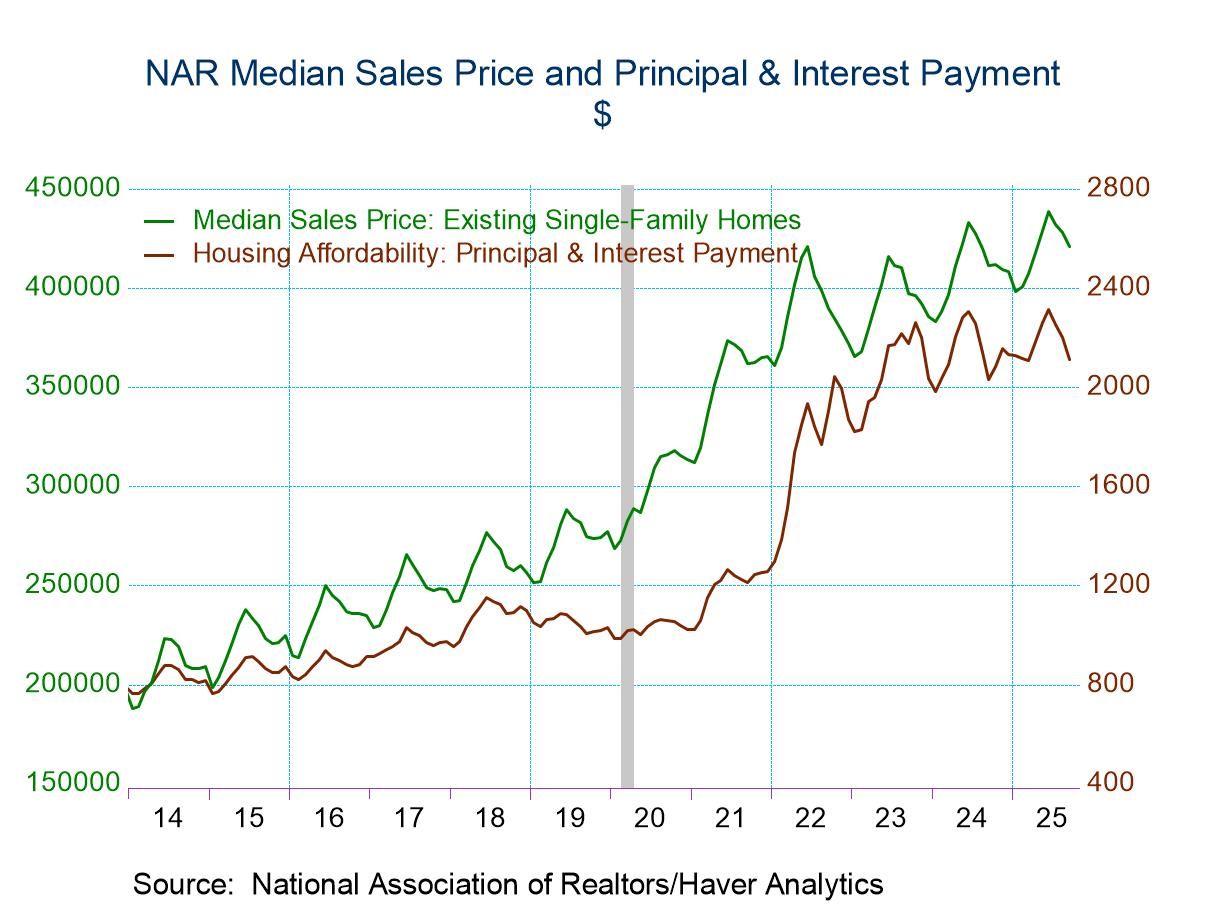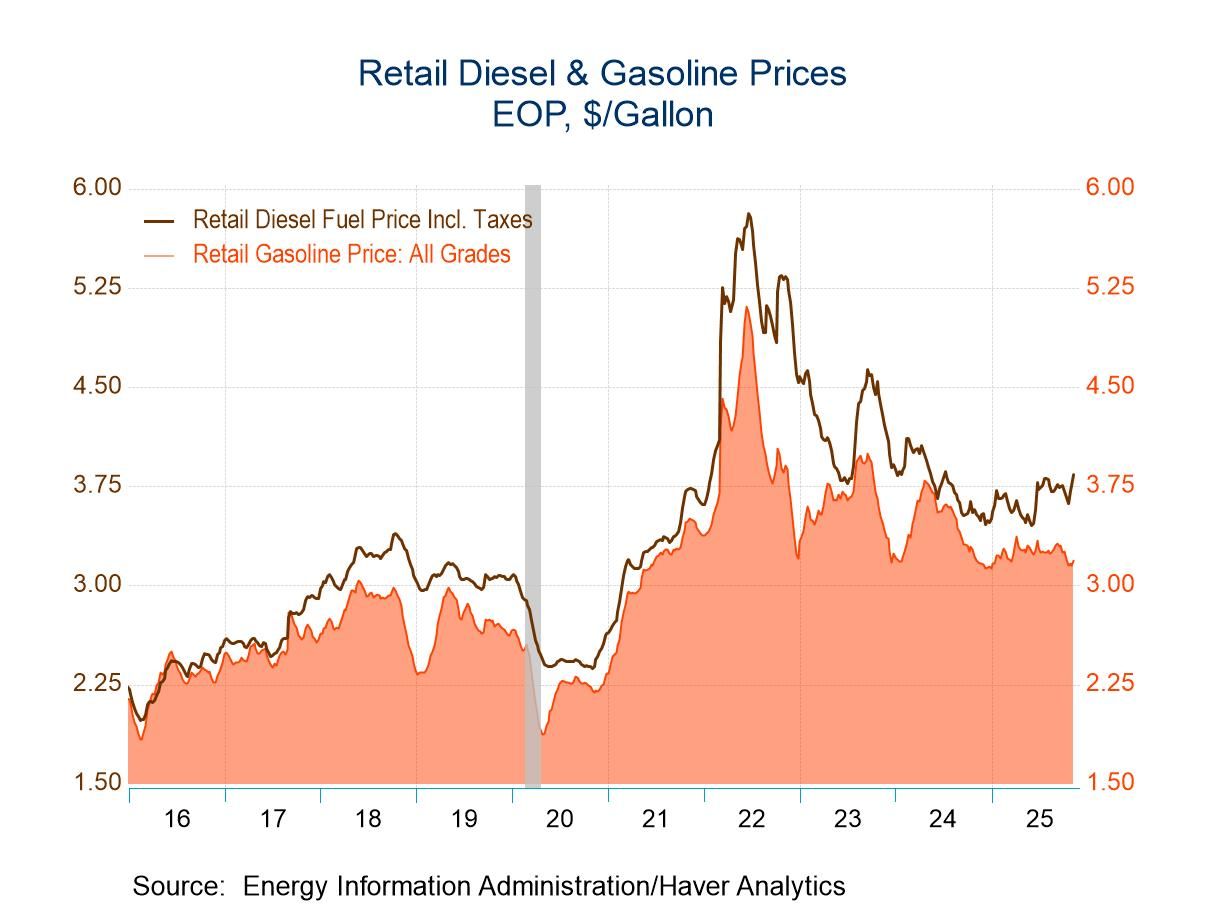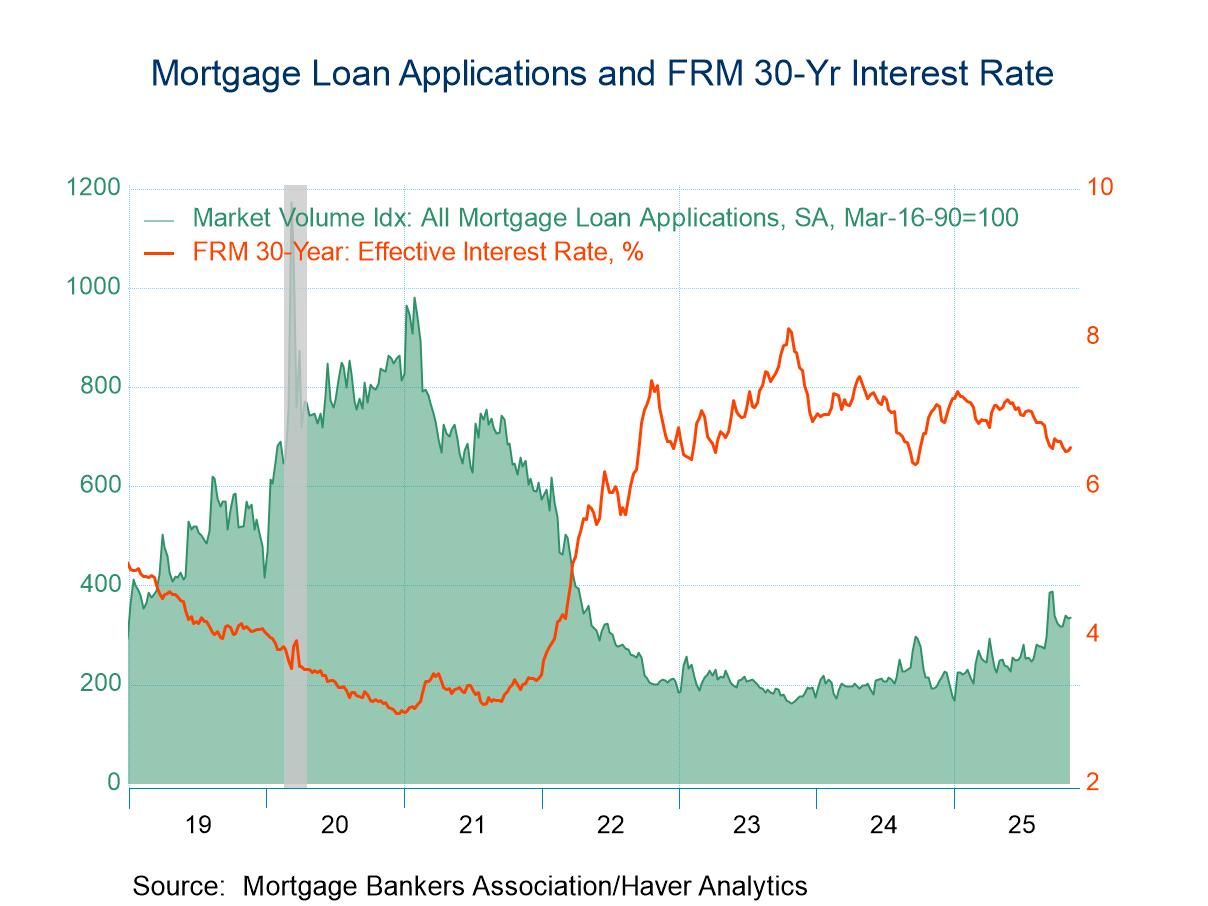U.S. Empire State Manufacturing Index Unexpectedly Falls in June to a Three-Month Low
Summary
- June General Business Conditions Index down 6.8 pts. to -16.0.
- Negative numbers for new orders (-14.2), shipments (-7.2), and unfilled orders (-8.3), but positive readings for employment (4.7, highest since Dec. ’22) and inventories (0.9).
- Current prices paid drops 12.2 pts. to a three-month-low 46.8.
- Firms are optimistic about the future business outlook, w/ Future Business Conditions Index up to a four-month-high 21.2 and future prices paid down to a three-month-low 59.6.
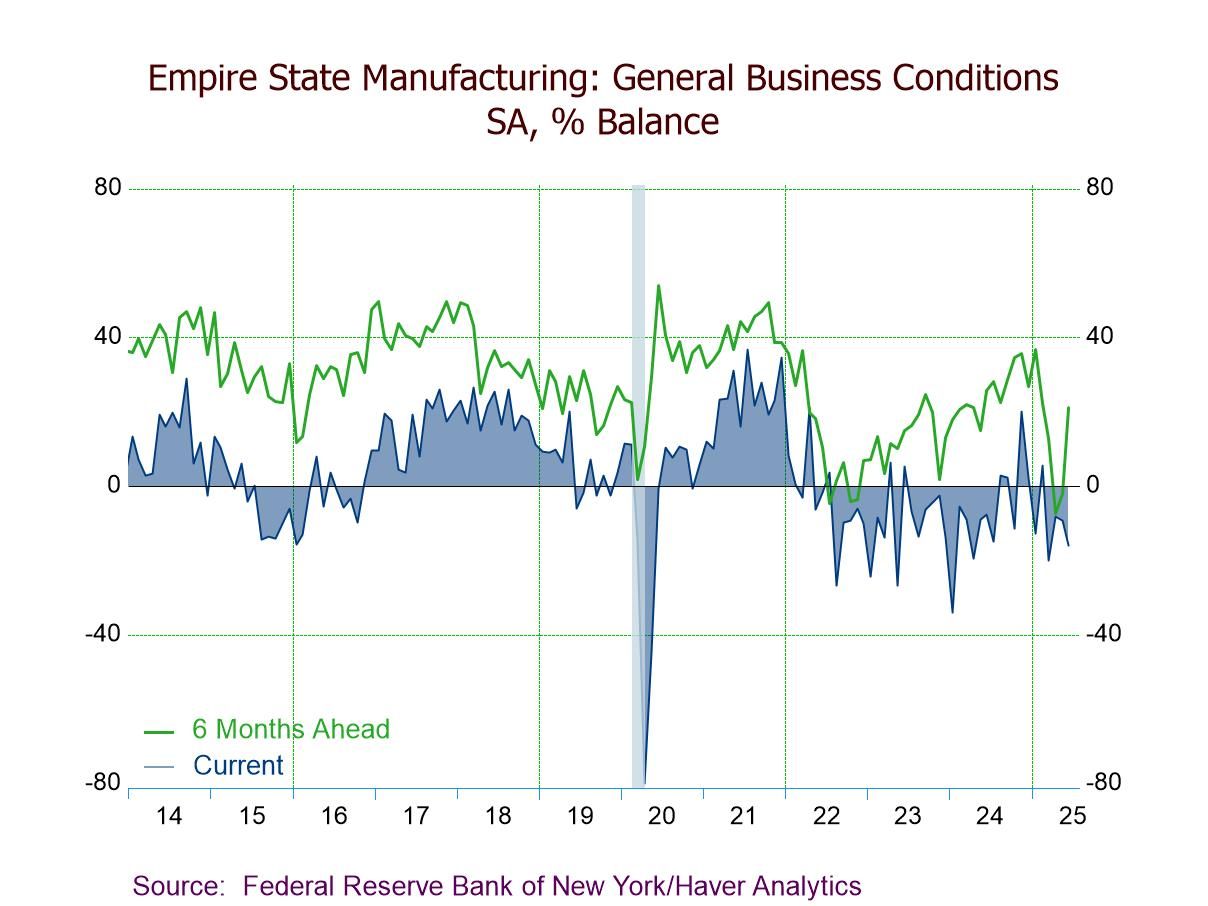

The Empire State Manufacturing Index of General Business Conditions decreased to -16.0 in June, down from -9.2 in May and -8.1 in April, according to the Empire State Manufacturing Survey released by the Federal Reserve Bank of New York. A reading of -6.0 for June had been expected in the Action Economics Forecast Survey. The unexpected decrease in the June index indicated that the business activity in New York State contracted for the fifth time in six months and to the lowest level since March; it was also down from -7.7 in June 2024. The percentage of respondents reporting an increase in general business conditions was 16.9% in June, down from 28.3% in May; the percentage reporting a decrease was 32.9%, down from May’s 37.5%. The latest survey was conducted between June 2 and June 9.
The headline index reflects the answer to a single question concerning the state of economic activity. Haver Analytics calculates a composite index from the five major components, which is comparable to the ISM manufacturing index. This calculated index dropped to 48.6 in June, down from 51.1 in May and 49.3 in April, indicating contraction for the third month in four and to the lowest level since October. It was up from 48.5 in June 2024 and a low of 42.5 in January 2024; however, registering below 50, the breakeven point between expansion and contraction. The index is the average of five diffusion indexes: new orders, shipments, employment, supplier deliveries and inventories with equal weights (20% each).
In the latest survey, the new orders index dropped to -14.2 in June after a 15.8-point jump to 7.0 in May, indicating new orders contracted for the third time in four months and to the lowest level since March; nevertheless, it was an improvement from a low of -35.0 in January 2024. The shipments index slid to a three-month-low -7.2 in June following a 6.4-point rise to 3.5 in May, but it was up from a low of -22.7 in April 2024. The unfilled orders index decreased to -8.3 in June after a 0.7-point increase to 4.8 in May, indicating unfilled orders contracted this month following two successive months of expansion; the index reached a low of -24.2 in January 2024. The inventories index fell to 0.9 in June after a 2.6-point decline to 4.8 in May, suggesting that inventories expanded at the slowest pace in eight straight months of expansion. Meanwhile, the delivery times index increased to 1.8 in June, the highest reading since February, from 1.0 in May, with 14.7% of respondents reporting higher delivery times and 12.8% of respondents reporting lower delivery times.
On the labor front, the number of employees index rebounded to a positive 4.7 in June after a 2.5-point decline to -5.1 in May, showing employment expanded for the first time since January and at the highest level since December 2022. The index was up from a low of -9.7 in December 2023. A higher 14.6% of respondents reported an increase in employment in June while a lessened 9.9% reported a decline. The average workweek index increased to -1.5 in June, the highest reading since February, from -3.4 in May; however, having remained in negative territory for the seventh consecutive month.
Inflation indicators were mixed this month. The prices paid index dropped to 46.8 in June, the lowest level since March, following an 8.2-point rise to 59.0 in May. The index was up from its recent low of 21.1 in December and a low of 16.7 in December 2023 but significantly down from a high of 86.4 in April 2022. A 49.5% of respondents reported higher prices paid in June while only 2.8% reported lower prices paid. The prices received index rose to 26.6 in June following a 5.8-point drop to 22.9 in May. The index was up from its recent low of 4.2 in December and a low of 3.9 in July 2023 but well below a peak of 56.1 in March 2022. An increased 29.4% of respondents reported higher prices received in June while a lessened 2.8% reported lower prices received.
Firms grew optimistic about the future business outlook in the latest survey. The index for future business conditions jumped to 21.2 in June, the highest reading since February, from -2.0 in May and a near-record-low -7.4 in April, with an increased 38.4% of respondents expecting business conditions to improve in the next six months. Future new orders (26.1 vs. -2.7) and shipments (23.0 vs. -3.4) expanded in June after contracting in May. Growth in employment (10.4 vs. 11.6) weakened slightly in June vs. May but still showed continued expansion. Capital spending plans remained soft, with expectations for capital spending falling to -7.3 in June, the lowest reading since May 2020, from -6.7 in May. Expected prices paid fell to 59.6 in June, the lowest level since March, from 66.7 in May, while expected prices received rebounded to 41.3 from May’s five-month-low 35.2.
The headline index reflects the answer to only one question concerning general business conditions and is not calculated from the components. The indexes in this report are diffusion indexes and measure the percentage of respondents indicating an increase minus the percentage indicating a decrease with zero separating expansion from contraction.
The New York Fed survey data are contained in Haver’s SURVEYS database. The expectations series is in Haver’s AS1REPNA database.


Winnie Tapasanun
AuthorMore in Author Profile »Winnie Tapasanun has been working for Haver Analytics since 2013. She has 20+ years of working in the financial services industry. As Vice President and Economic Analyst at Globicus International, Inc., a New York-based company specializing in macroeconomics and financial markets, Winnie oversaw the company’s business operations, managed financial and economic data, and wrote daily reports on macroeconomics and financial markets. Prior to working at Globicus, she was Investment Promotion Officer at the New York Office of the Thailand Board of Investment (BOI) where she wrote monthly reports on the U.S. economic outlook, wrote reports on the outlook of key U.S. industries, and assisted investors on doing business and investment in Thailand. Prior to joining the BOI, she was Adjunct Professor teaching International Political Economy/International Relations at the City College of New York. Prior to her teaching experience at the CCNY, Winnie successfully completed internships at the United Nations. Winnie holds an MA Degree from Long Island University, New York. She also did graduate studies at Columbia University in the City of New York and doctoral requirements at the Graduate Center of the City University of New York. Her areas of specialization are international political economy, macroeconomics, financial markets, political economy, international relations, and business development/business strategy. Her regional specialization includes, but not limited to, Southeast Asia and East Asia. Winnie is bilingual in English and Thai with competency in French. She loves to travel (~30 countries) to better understand each country’s unique economy, fascinating culture and people as well as the global economy as a whole.



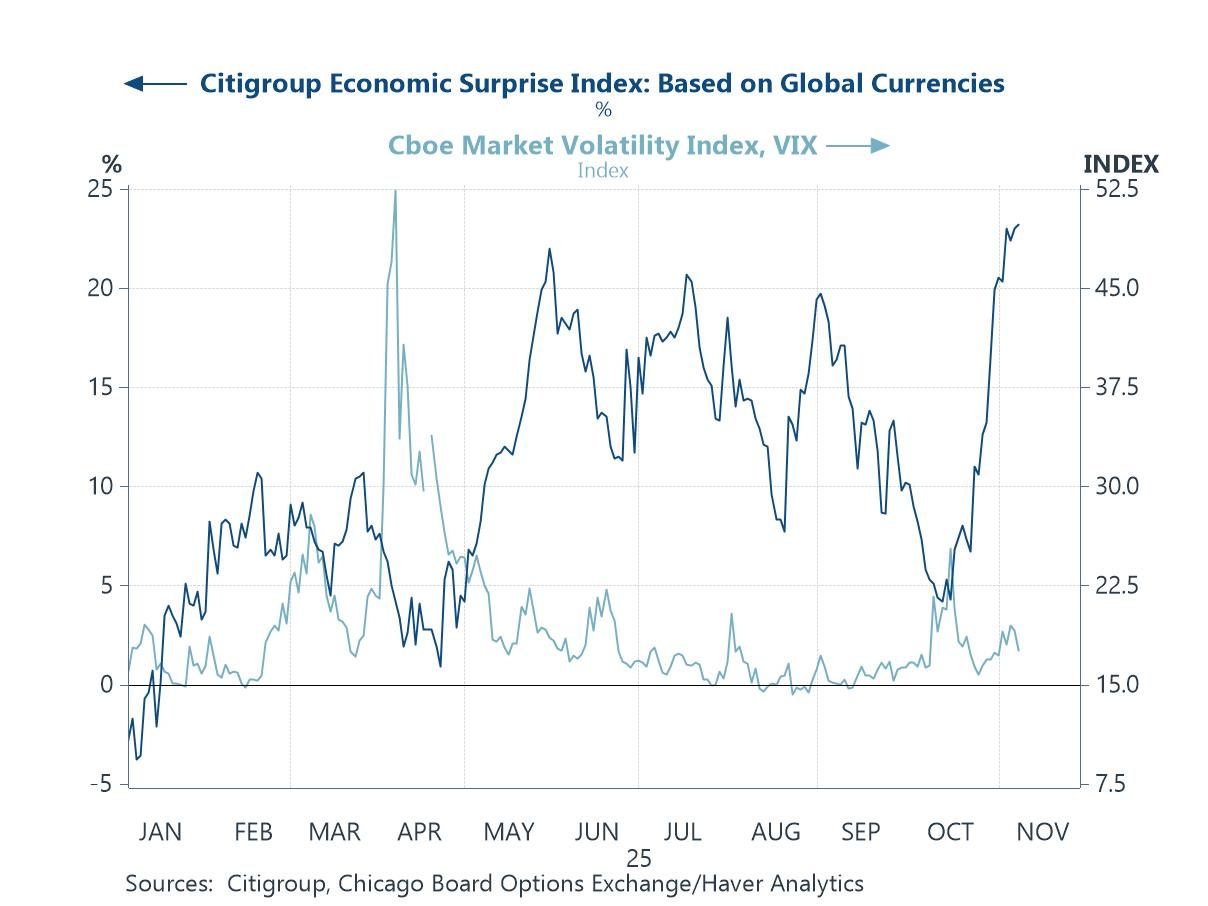
 Global
Global